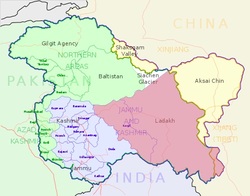 Deep gorges, ice-capped mountains, gushing rivers...make travel to Ladakh an unforgettable experience.
Ladakh is the eastern region in the state of Jammu and Kashmir of Northern India, sandwiched between the Karakoram mountain range on the north and the Himalayas on the south. Bounded by two of the world's mightiest mountain ranges, the Karakoram in the north and the Great Himalaya in the south, it is traversed by two other parallel chains, the Ladakh Range and the Zanskar Range. No wonder, it is a popular place for adventure tourism.
The mountain ranges span the borders across Pakistan, India, and China. Ladakh was a critical link in the ancient Central Asian trade route network connecting Tibet, China and Kashmir. The word Ladakh means "land of high passes".
The Indian portion of Ladakh is composed of the Leh and Kargil districts. The Leh district is the largest district of India, covering more than half the area of Jammu and Kashmir.
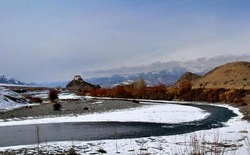 The people are an equal mix of Buddhists and Muslims. Buddhists form the majority in the east close to the Chinese border while Muslims form the majority in the north and west. The two religions have blended in Ladakh to create a unique culture. The dominant culture that travellers are likely to confront is Tibetan Buddhism as the majority of the tourist attractions are in the east. Now, many Tibetans from the occupied Tibet flee the Chinese oppression to settle down in Ladakh and practise freely their religion and culture.
Steep gorges and stark terrain make Ladakh an awesome place to visit! Rock carvings have been found in many parts of Ladakh, showing that the area has been inhabited from the Neolithic times. Monasteries and the well preserved Tibetan-Buddhist culture makes it even more attractive.
Read More
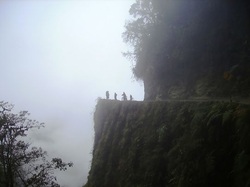 Which is the scariest road in the world to be driving on? The unanimous and top-of-the-list answer is the 10-feet wide North Yungas Road running in the Bolivian Andes through the emerald green forests of the Amazon from La Paz (Bolivia's capital) to Coroico, winding through dangerous precipices that plunge down almost 3,600 meters. The road is known as El Camino de la Muerte (Spanish for "Road of Death"). There are no guard rails on this poorly maintained road and when you look out while negotiating narrow hair pin curves, the dizzying abyss down below looks as though the Earth has opened up. Fog and vapors rise up from the valley below, blurring the vision. Waterfalls, or rather the accumulated rainwater, cascade down the hills and fall on the road, often turning it slimy and loosen rocks from the hillsides above. News reports say that 200-300 travelers are killed yearly along the road. In these regions, you are required to drive on the left hand side, in contrast to the rest of the country, and the laws mandate that the downhill driver does not have the right of way and has to back up and yield. This helps the downhill driver to keep an eye on the wheel closest to the precipice and help passing other vehicles along the very narrow road. Read More
Growing vegetables at Dal Lake in Srinagar, Kashmir, and selling them in houseboats is a feast for the eye. 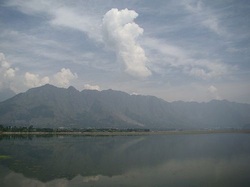 Pir Panjal mountains overlooking Dal lake The Indian state of Kashmir is known for its charming beauty. It is surrounded by three mountain ranges of the Himalayas- Karakoram, Zanaskar and Pir Panjal, running from northwest to northeast.
Srinagar, the summer capital of Kashmir (Jammu is the winter capital) and the “Venice of the Orient”, is built around Dal Lake. The sparkling quiet waters of Dal surrounded by snow-capped mountains on its three sides, undoubtedly mark it as one of the most beautiful lakes of India. It is also the second largest lake in the state of Jammu and Kashmir with numerous gardens and orchards all along its shores.
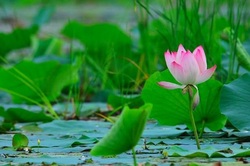 Lotus flowers at dal lake The lake covers 18 square kilometers, and is divided by causeways into four basins, called Gagribal, Lokut Dal, Bod Dal and Nagin.
Clusters of green vegetation gently floating on the surface and the undulating pink and white lotus flowers add charm to the environs, while beautiful white breasted kingfishers greet you cheerfully amidst the prayer calls from the lakeside Hazratbal Mosque.
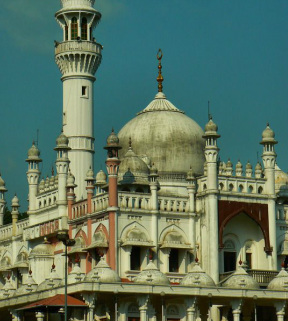 It is one of the largest annual pilgrimage in the world with an estimated 50–60 million devotees walking barefoot through forests abounding in wildlife – a spiritual journey that underscores universal brotherhood, regardless of caste and creed.
Though the pilgrims comprise mostly the Hindus, Christians and Muslims undertake the journey in increasingly larger numbers, and climb up the Sabarimala range of hills to pay obeisance to Lord Ayyappa. Before this arduous journey, however, they seek the permission and blessings for a safe journey at the Vavar mosque at Erumeli.
By the turn of nineteenth century, Buddhism was all but gone from the land of its birth. This article describes how archeology helped resurrect the buried mounds of evidence and lists a few places connected with Buddha's life.  Alexander Cunningham "Discovery" of Buddhism
Buddhism disappeared in India in the 11th century, due to the many invaders who destroyed thousands of monuments. The Buddha was all but forgotten in the land of his birth.
Buddhism was rediscovered owing to the work done by government-sponsored Archaeological Survey of India, founded in 1871. Alexander Cunningham, the first Director-General, brought Buddhism to the forefront and established its study as a separate discipline.
Assisting Cunningham in his archaeology work were the accounts left by two Chinese monks: Fa Xian’s Record of Buddhist Countries in the 1840s and Xuanzang’s Record in the 1850s. Between the two of them, they had mapped out the whole of Buddhist India, with all the main sites, their locations, their importance, their histories, and details of the monasteries and the monks who inhabited them.
One such Buddhist site uncovered by Cunningham is at Sarnath, the spot of the Buddha’s first sermon after his enlightenment. The Mahabodhi Temple as we see it today in Bodh Gaya was restored by him. Another of his discovery is the spot where Buddha died. Under his supervision, the statue of reclining Buddha picturing the Nirvana was found amidst stupas exactly as Xuanzang had described it 1,200 years before. Helping to tie up the information about Buddhism were the hundreds of stupas that were excavated at various sites. These carried inscriptions, most important of which were the Ashoka's edicts. Ashoka gave up military conquest to undertake Dharmavijaya — victory by righteousness and truth, and provided royal patronage for the propagation of Buddhism both within and beyond his empire, into Asia and Greece.
A rail journey through the clouds by the renowned Darjeeling Himalayan Railway to visit Darjeeling, which offers a breathtaking view of four mountain peaks – the Everest, Kanchendzonga, Makalu and Lhotse. 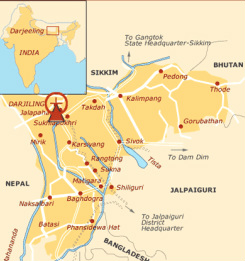 Darjeeling is one of the oldest hill stations in India.
During the British Raj, Darjeeling's temperate climate attracted the ruling British headquartered at Calcutta who frantically sought to escape the summer heat of the plains. But they found the 3-day journey to Darjeeling, covering a steep distance of 600 kilometers interspersed with rivers to be too difficult. Although they could reach Siliguri from Calcutta by train, they had to use horse drawn carts or tongas to go further to Darjeeling. Interestingly, the main road connecting Siliguri and Darjeeling is still known as the Hill Cart Road.
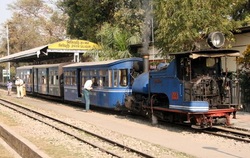 Train leaving Siliguri The British then built the Darjeeling Himalayan Railway between 1879 and 1881 and is about 88 km long. It takes 6 hour to reach Darjeeling by the toy train from Siliguri Junction through a breath-taking and gorgeous terrain to Darjeeling.
Nicknamed the "Toy Train", the train is powered by a steam engine and runs on a track made narrow to help the train go through safely the sharp turns of the hills. It requires four men to operate the engine, two inside the engine and two to pour sand on the track in order to increase the grip of the wheels over the track.
|






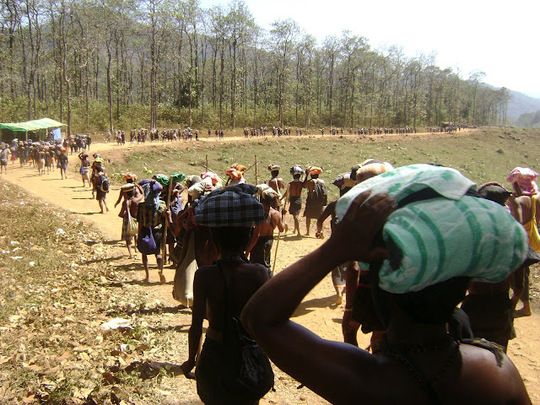
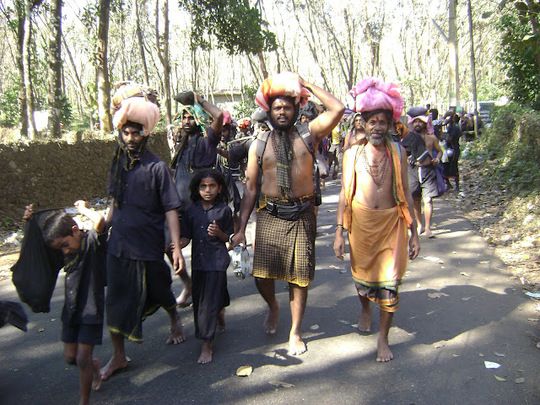



 RSS Feed
RSS Feed